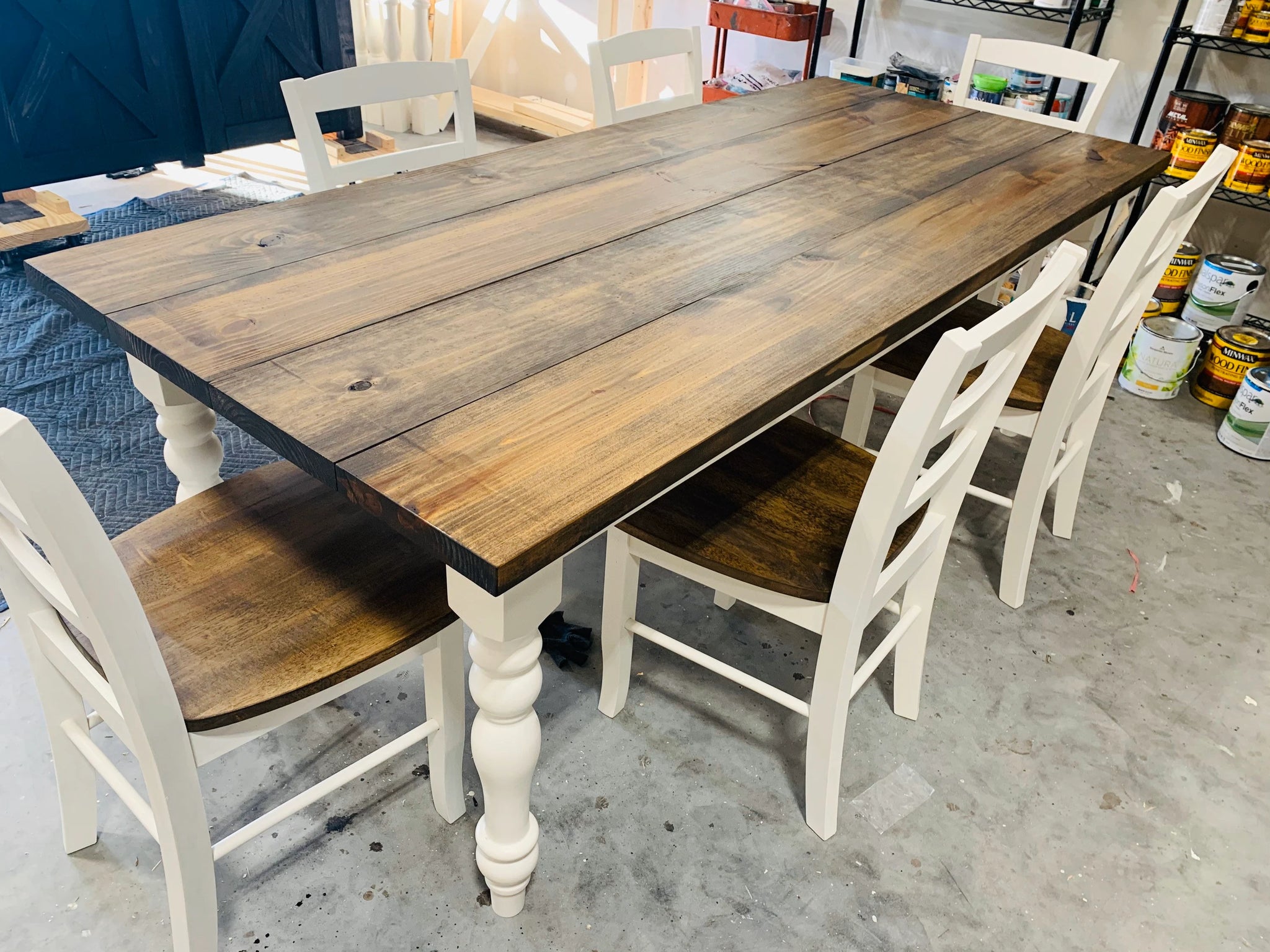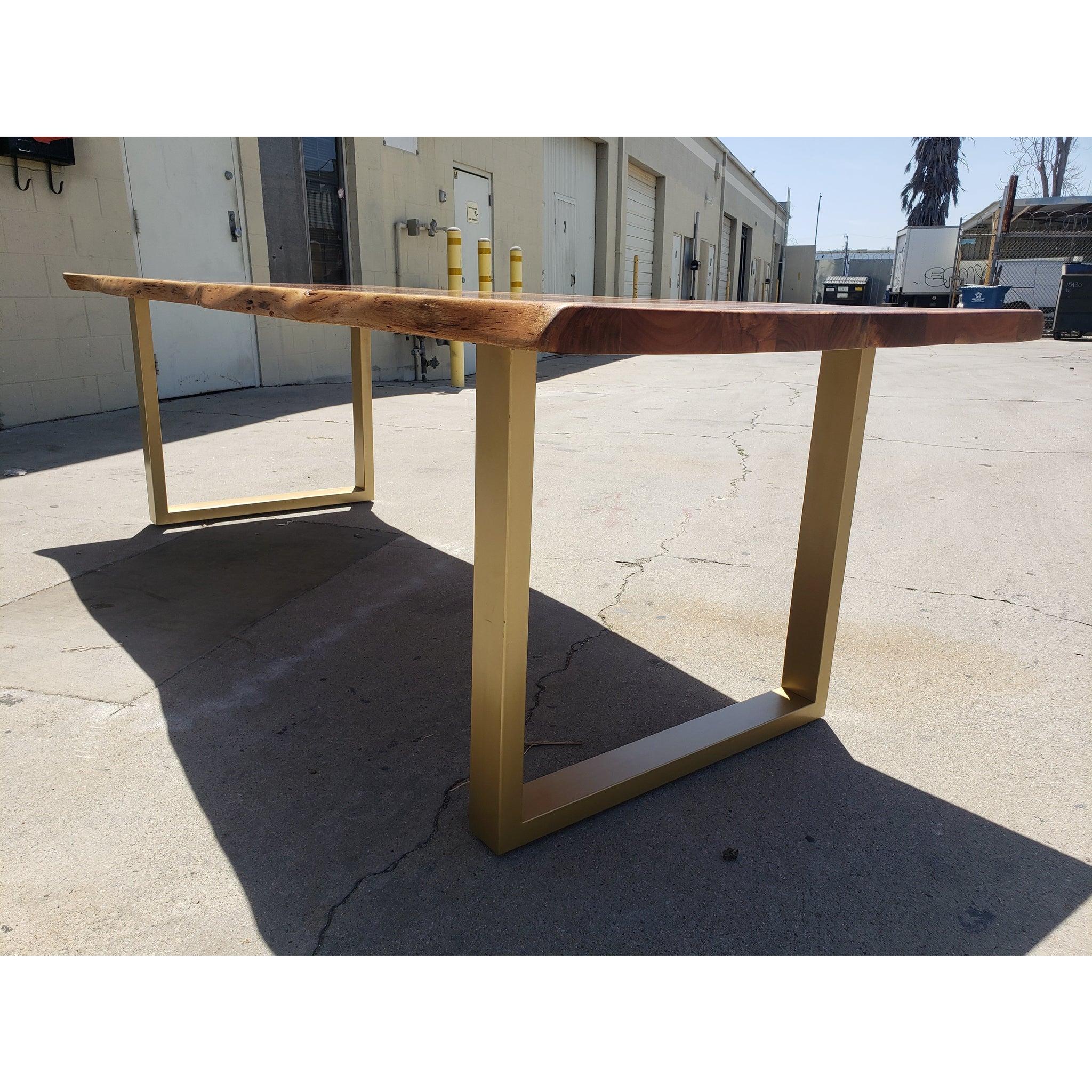Key Variables to Remember for Dining Table Legs Timber Choices
When choosing timber for dining table legs, numerous important elements necessitate mindful factor to consider to make certain both capability and aesthetic allure. The selection of wood kind, characterized by its sturdiness and unique grain patterns, plays a crucial function in the general design and durability of the item. Furthermore, one must consider upkeep requirements and the environmental effects of sourcing materials. As these aspects intertwine, they considerably influence the last end result of your dining table. Comprehending the nuances of each element can be complicated, leading to vital choices that merit additional expedition.
Wood Kind and Qualities
When selecting timber for eating table legs, it is necessary to recognize the special qualities of numerous wood kinds. Different woods offer distinct benefits and downsides, affecting both the durability and aesthetic appeal of the completed product.
Oak, recognized for its remarkable toughness, also features a noticeable grain that can add personality to the table. Cherry timber, with its abundant color that grows over time, offers a glamorous look however may need even more upkeep to avoid scratches.
On the various other hand, softwoods like pine and fir are a lot more economical and easier to work with, yet they are less long lasting than woods. Pine is lightweight and includes a cozy, rustic look, making it a popular option for laid-back dining setups. It is more prone to scrapes and damages.
Understanding these features will assist in making an educated decision to make sure the legs of the dining table meet both functional and visual requirements.
Grain Patterns and Aesthetics
Choosing the best grain pattern can significantly boost the aesthetic appeal of table legs. The wood's grain is not just a visual attribute; it conveys an unique individuality and appeal to each item. Various timber varieties display distinctive grain patterns, varying from the straight lines of maple to the complex swirls of oak and the striking number of walnut. These patterns can evoke numerous designs, from rustic to modern-day, making it vital to pick a grain that lines up with the total design of the eating area.
In addition, the alignment and scale of the grain can affect the viewed dimension and style of the table. For example, larger, more obvious grains might offer a bold, significant effect, while finer, subtler grains can produce a fine-tuned, understated look. Furthermore, the ending up process can even more enhance these patterns, emphasizing the natural charm of the timber and bringing out abundant shades.
Ultimately, the choice of grain pattern ought to integrate with various other design elements, such as the tabletop and bordering furnishings, guaranteeing a cohesive aesthetic that elevates the eating experience. Thoughtful choice of wood grain not just contributes to the table's appeal but also reflects the proprietor's taste and design.
Durability and Stamina
The toughness and toughness of eating table legs are extremely important considerations for guaranteeing long life and stability in any type of dining room. Picking the ideal wood is essential, as various varieties exhibit differing levels of strength.

Eventually, purchasing premium timber and durable building methods will certainly produce a table that stands the examination of time, while giving a reliable structure for plenty of dishes why not try here shared among family members and close friends. Prioritizing resilience and strength makes sure that your dining table continues to be useful and visually pleasing for years to come.
Maintenance and Care
Proper maintenance and care are essential for protecting the toughness and toughness of table legs made from wood. Regular cleaning is crucial; making use of a soft, damp towel makes sure that dirt and particles do not build up, which can cause scratches and monotony. It is recommended to prevent severe chemicals or abrasive materials that could damage the surface.
In addition, using an ideal wood gloss or wax periodically can assist maintain the luster and secure the wood from moisture and spills. It is critical to comply with the producer's suggestions pertaining to the type of product to make use of, as certain finishes may respond negatively to specific chemicals.
Moisture and temperature variations can additionally impact wood table legs, creating them to warp or split. It's best to put the table far from direct sunlight and heat resources. Resolving these quickly can prevent more damages. if the table legs have any kind of damages or scrapes.
Finally, periodically inspecting the joints and screws for rigidity is essential to preserve structural honesty (Dining Table Legs Wood). By sticking to these maintenance techniques, property owners can ensure their wood dining table legs stay go to my blog appealing and functional for years to come
Ecological Considerations
When choosing wood for dining table legs, it's important to take environmental factors to consider right into account. The sourcing and sustainability of timber are vital in minimizing ecological effect. Going with wood from certified sources, such as those backed by the Woodland Stewardship Council (FSC), makes sure that the wood is collected properly, promoting forest conservation and biodiversity.

Additionally, regional sourcing of wood reduces transport discharges, supporting regional economic climates while reducing environmental impact. It is also advisable to be aware of the wood's therapy and ending up procedures, as specific chemicals can be harmful to both human health and the setting. By focusing on sustainable timber options, consumers can contribute to ecological conservation while appreciating the longevity and elegance of their dining table legs.
Final Thought
In verdict, choosing wood for eating table legs requires cautious consideration of numerous aspects, including wood kinds, grain patterns, and sturdiness. The visual charm of special grain patterns can boost the total layout, while the toughness of hardwoods ensures long life. Upkeep requirements and ecological sustainability further impact timber selections, stressing the significance of sourcing from certified or redeemed products. A notified selection process eventually adds to a functional and aesthetically attractive dining room that aligns with sustainable methods.
When picking timber for eating table legs, several vital variables call for mindful consideration to make certain both functionality and visual appeal.Appropriate maintenance and treatment are vital for maintaining the resilience and stamina of eating table legs made from timber.When selecting wood for dining table legs, it's necessary to take ecological factors to consider into account. By prioritizing lasting timber options, customers can add to environmental preservation while delighting in the toughness and beauty of their dining table legs.
In conclusion, selecting wood for dining see post table legs requires cautious factor to consider of different aspects, consisting of wood kinds, grain patterns, and toughness. Dining Table Legs Wood.